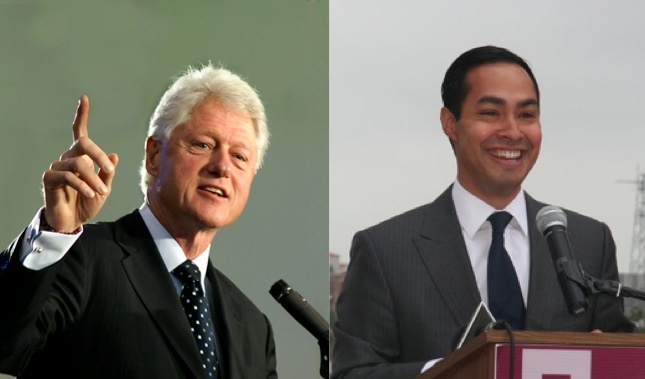From Clinton to Castro: Democrats' Southern strategy reaches out to both older and newer South

Wednesday night, reporter John Frank tweeted that North Carolina delegates to the Democratic National Convention were sharing high-fives after former President Bill Clinton's epic 45-minute address.
No surprise there: Clinton's tour-de-force was a huge hit with Democrats of all flavors in Charlotte and nationally.
But the speech also had a specific goal: to help sell President Obama and the Democratic brand to whites -- including Southern whites -- who have been an increasingly challenging demographic for the party.
A pre-convention Gallup poll found Bill Clinton has a 63 percent approval rating among whites, compared to just 43 percent for Barack Obama. And as Richard Harpootlian, a Democrat from South Carolina told the Associated Press, "[Clinton] resonates with Southern white folks dramatically,"
Kevin Alexander Gray, a civil rights activist also from South Carolina, compares Clinton's role with appealing to white voters to how Democrats used to deploy the Rev. Jesse Jackson when trying to mobilize African-American voters. "They used Jackson to 'vouch' for white Democrats to black audiences," Gray told Facing South. "Clinton is vouching to whites for Barack Obama."
"Bubba's" mission of appealing to whites, including whites in battleground Southern states, exists in delicate balance with another key goal of this week's convention: to win over the increasingly diverse South of the future.
A leading symbol of the emerging South was Julian Castro, the 37-year-old mayor of San Antonio who addressed the convention a day earlier. A former aide to George W. Bush said Castro has "a very good chance of becoming the first Hispanic president of the United States."
Castro's speech also scored high marks, speaking to the newer-immigrant experience in states like Texas, which gained four Congressional seats and Electoral College votes after the 2010 Census.
Like other Southern states -- which now make up one-third of the nation's Electoral College -- Texas owes its growing political clout to growing Latino, African-American and urban communities; two-thirds of the Lone Star State's growth over the last decade came from Latinos alone.
The strong focus on key women leaders -- from Cecile Richards, president of Planned Parenthood and the daughter of former Texas Gov. Ann Richards, to First Lady Michelle Obama -- also speaks to a growing crack in the GOP's Southern white base: white women voters.
In 2008, Obama actually did better with white men -- 41 percent of white male voters, according to exit polls -- than white women (39 percent), in part due to Gov. Sarah Palin being VP on the GOP ticket. But overall, Obama exploited a 13-point "gender gap" to win the presidency.
As NBC News points out, Obama's current advantage among women voters in Southern battleground states is well below that: 11 percent in North Carolina, seven percent in Virginia and just five percent in Florida.
But with the Republican Party associated with cuts to women's health programs -- and tarred with the inflammatory statements of Rep. Todd Akin and Rush Limbaugh -- Democrats see an opportunity to win over women, of all races.
Will the Democrats' two-tier Southern strategy -- striving to reach both an Older South and Newer South -- work? That remains to be seen. But given that neither Obama or Romney leads by more than three points in polls of voters in Florida, North Carolina and Virginia, it's clear they'll need both Souths to win.
IMAGES: Creative Commons photos of Julian Castro (NOWCastSA) and Bill Clinton (Creativity + Timothy K Hamilton).
Tags
Chris Kromm
Chris Kromm is executive director of the Institute for Southern Studies and publisher of the Institute's online magazine, Facing South.
